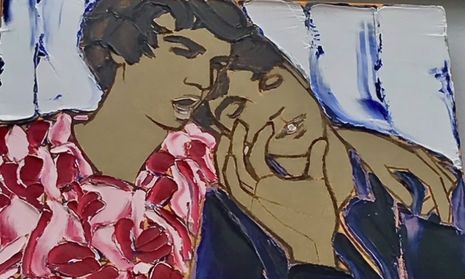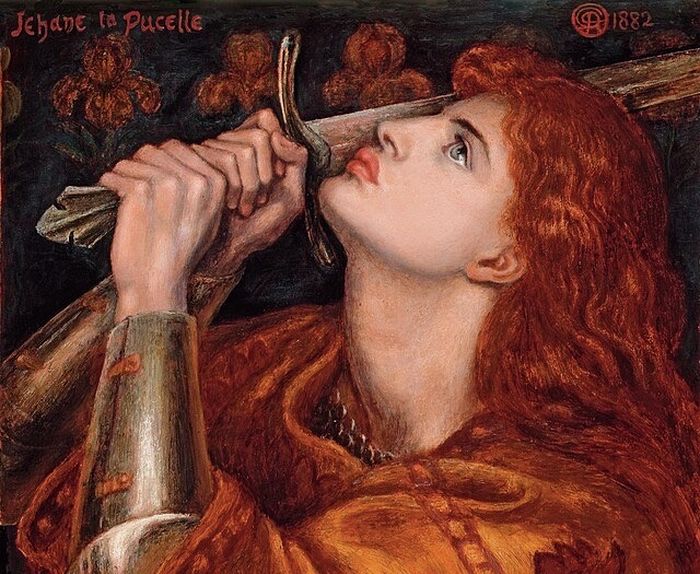Picturing Silence: the art of leaving things unsaid
Inspired by the Royal Academy Summer Exhibition, Madelaine Clark reflects on how painters and poets reckon with the gaps in language

The Royal Academy Summer Exhibition was a car boot sale of artwork – perhaps, even, a buffet. It stuffed me. At times, pieces laddered up the walls in rows of ten, leaving a bolus of pets and portraits stuck awkwardly in my throat. The scale of the exhibition signals its liberal acceptance policy, where anyone is allowed to submit their work. But here, ambition was overwhelming subtlety. Where I hoped for quiet corner to dwell on, I found merely another eight cat pictures, and wanted to claw them down. Ryan Gander’s Rest in Pieces, or the Squatters (Charlie Meet Hammons’ Untitled (Night Train) (1989)) was one of these feline takes – an animatronic cat, which breathed, shallowly, until the last few weeks of August when the exhibition closed. I half-expected the moggy to flatline any second, knocked out by the assault of stimuli ahead.
The exhibit is now closed to the public, but I’ve been returning to some pieces in my mind, aided by the RA’s online catalogue of works. Having walked through the jumble, I did find that, occasionally, something sharp cut through, cleansing the palate. My eyes passed over a canvas and I was shocked alive, much like Gander’s sleepy stray.
“My eyes passed over a canvas and I was shocked alive”
Caroline Walker’s Birthing Ball is one of these fibrillating pieces. The painting shows a pregnant woman on a yoga ball, fiddling with an air pump. She, like the ball, is dangerously inflating, connected with it by the umbilical attachment between them. The image is oddly comic, and in front of my laptop I, too, swell with a laugh. Amidst the ordinariness of a woman’s domestic life, the furniture mirrors her, supports her, and the theme of the exhibit – ‘Only Connect’ – returns to me here. I find myself wondering about the mysticism of an environment in tune with a person’s health. The laughter leaves me as I look to the crib, blood-red at the bottom, and wonder about the possibility of an unexpected pop.
A piece by Holly Bazett similarly beguiles me. Here, The Revellers captures the drama of repressed intimacy. It shows two young men sharing a cigarette. The background slurs with sluggish oil paint, as though drunken bacchanalia has seduced the air itself. It’s almost homoerotic. Though they embrace, their skin is flat and insensitive. It holds itself back, unrendered, while the left man’s shirt is contrastingly thick, patterned with coarse lipstick marks. The stains pout off the canvas, reaching to make connection with the friend on his shoulder. But the oil paint is dry. Like Keats’s maiden’s loth, the men are frozen, and so only the shirt still yearns.
“The background slurs with sluggish oil paint, as though drunken bacchanalia has seduced the air itself”
I thought about how my favourite art functions by exclusion, or the unsaid. I cannot help but nestle into the gaps and rifts left purposefully behind. Now, as I traverse the RA’s digital gallery once more, I am strikingly reminded of the final scene of Hitchcock’s North by Northwest (1959): Roger Thornhill (Cary Grant) and Eve Kendall (Eva Marie Saint) kiss in their train cabin, leaning back on the bed as the violins, too, pursue climax. The scene cuts off sharply, censoring any bawdy bits. Instead, we zoom out to a train entering a tunnel, and the words “THE END” grin cheekily in toothy white typography. In Hitchcock’s filmic language, the unsaid announces itself.
In a gallery or on a screen, we might expect silence. But even in literature – the medium for words – I find myself drawn back to the reticent. “Nanking, Dachau.” This is the final line from a sonnet by Auden (In Time of War, 1939), a line referencing a site of massacre and a concentration camp, respectively. The sonnet, originally a mode of love poetry, has been appropriated to write about the catastrophes of the 20th century. Here, I find Auden at his most taciturn, his most revealing. The final line does not easily unravel. It is squat, dislocating me from the lilting rhythms I have grown familiar with in Shakespeare. Auden refuses to sound the usual chime of resolution, where wit should be exemplified. He has replaced sense with proper nouns.
“Auden’s poem leaves me with that sense of dislocation, of dissatisfaction”
Adorno once said that, after Auschwitz, “to write a poem is barbaric.” In this century, his aphorism has become a buzz-phrase and is often disfigured, but I think he is suggesting that there is an immorality to indulging oneself in words, post-horror. When Auden’s poem leaves me with that sense of dislocation, of dissatisfaction at something left unsaid, I remember that this is the point. His mere mouthful of syllables can pronounce the residue of terror more strikingly than a sentence. The poem’s emptiness is where I find its core.
Almost against my own will, I return to Gander’s cat. Is it pregnant with meaning or, like Walker’s ball, merely filling itself with empty air as it breathes? The work’s abbreviated title, Rest in Pieces, surely suggests roadkill, despite some signs of life. The work’s full title is unapologetically esoteric, so wordy and peculiar that it seems to approach a different kind of silence altogether. Gander begs confusion from us and, in a way, I warm to it. As the viewer, I have become the cat, pouncing on lasers of enlightenment which flit enticingly away.
All archival images of the Summer Exhibition can be found on the Royal Academy’s website.
 News / Cambridge postgrad re-elected as City councillor4 May 2024
News / Cambridge postgrad re-elected as City councillor4 May 2024 News / Gender attainment gap to be excluded from Cambridge access report3 May 2024
News / Gender attainment gap to be excluded from Cambridge access report3 May 2024 Comment / Accepting black people into Cambridge is not an act of discrimination3 May 2024
Comment / Accepting black people into Cambridge is not an act of discrimination3 May 2024 News / Academics call for Cambridge to drop investigation into ‘race realist’ fellow2 May 2024
News / Academics call for Cambridge to drop investigation into ‘race realist’ fellow2 May 2024 News / Some supervisors’ effective pay rate £3 below living wage, new report finds5 May 2024
News / Some supervisors’ effective pay rate £3 below living wage, new report finds5 May 2024




